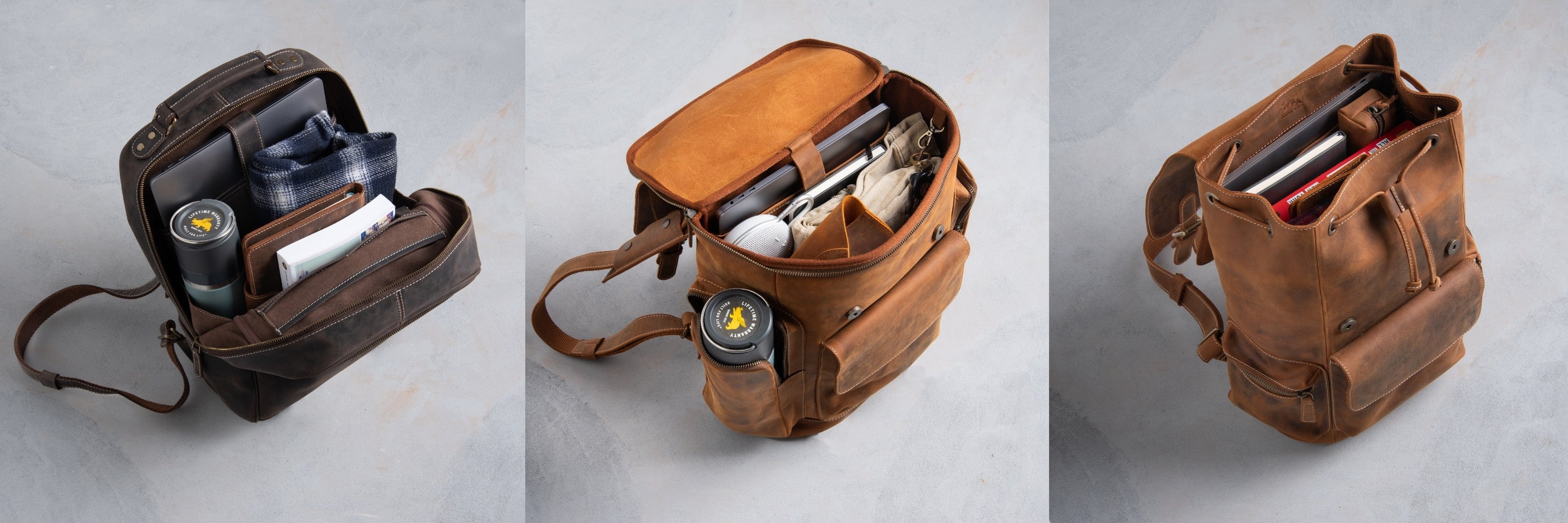History of the Backpack
The backpack might seem like an obvious invention after all people have been carrying things on their backs for as long as they’ve needed to carry things. However, the backpack as it is known today didn’t really make an appearance until 1878. Prior to this people would use a single strap to carry books or other things they needed to transport. It was cheap, easy and effective but there were a number of shortcomings, such as keeping the weight only over one shoulder and a lack of protection for whatever was being transported.

Things moved toward a change with Henry Merriam. In 1878 he has issued a patent for a knapsack. The pack had a metal frame and was designed to shift weight away from the body. It was developed for the United States Army and was meant to make things easy on soldiers by freeing them from straps and fasteners. It never really caught on because while it was functional it was very uncomfortable.
Duluth Bags
In 1882, another innovation came along from Camille Poirer of Duluth. He designed a pack that sat low on the back of the wearer and it included a head strap. This allowed the user to be able to carry their belongings and a canoe. The bag was made of durable canvas and was secured by straps and buckles. Its shape was specially designed to fit in the bottom of the canoe. This design of the bag is still in use today. Even our own Harper Bag is similar to this time-honored design.
In 1908, Ole Bergen tried his hand at designing a pack for hiking and hunting. The pack combined the soft material of a sack with thin tubular steel that followed the curve of the back. The design became very popular and traveled the world. In 1924 a wooden frame pack designed by Trapper Nelson became popular. It used canvas bands that cushioned the load on the shoulders and it was less bulky than the Duluth bag.
The Move Toward Lighter Backpacks
In 1938, Gerry Cunningham switched out heavy buckles for lightweight zippers. This made his pack lighter and better for rock climbing. In 1950, Ake Nordin designed a canvas pack with a metal frame that kept the pack higher and closer to his back. Just two years later the backpack would be transformed by Dick and Nina Kelty. They used aluminum to create lightweight frames and parachute material was used to create soft packs. With a contoured frame, soft shoulder straps and a waist strap this quickly became very popular with anyone who spent their time outdoors.
In 1967, Greg Lowe decided that external frame packs just weren’t the way to go. He created a pack that was soft enough to conform to the wearer’s back but stiff enough to handle heavy loads. A waist strap was added to shift the weight and was followed by a sternum strap and side compression straps. Gerry Cunningham was also hard at work in 1967 and this time he created something that put backpacks on an entirely new track. He created lightweight nylon, dry pack that quickly became popular. So popular than three years later Jansport released its own version.

Backpacks Gain Wide Appeal
These new lightweight backpacks were not only popular with outdoorsmen. Jansport put their new packs into the student sporting goods store at the University of Washington. They thought they would appeal to student hikers but they quickly realized that it wasn’t student hikers that wanted the bags. The bags became popular with all students on the campus who wanted something that would help them carry their books. Before the backpack made its way into the sporting goods store, students just carried their books in their arms or used a strap to sling them over their shoulders.
Quickly the idea of school backpacks spread like wildfire and schools became what most people associate the backpack with. Today backpacks are seen as being either for the outdoorsman or for the student. At Yukon bags, we design bags that are great for taking anywhere outdoors and for taking around the school campus. They are versatile, durable and designed to suit any need even as they change from day today. Browse through our line of backpacks to see just how they can work for you.


Hello,
I love your Crazy horse Montana bag, but it is only 12 inches in length. Is it possible to get it in 13 inches. Please advise.
thank you,
Bushra
My husband bought me the Harper bag and I absolutely love love love it. The bag is great and smells good also. Thank you for a beautiful well made product.
Leave a comment